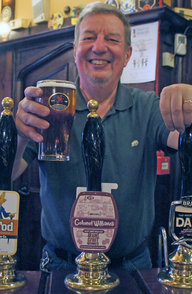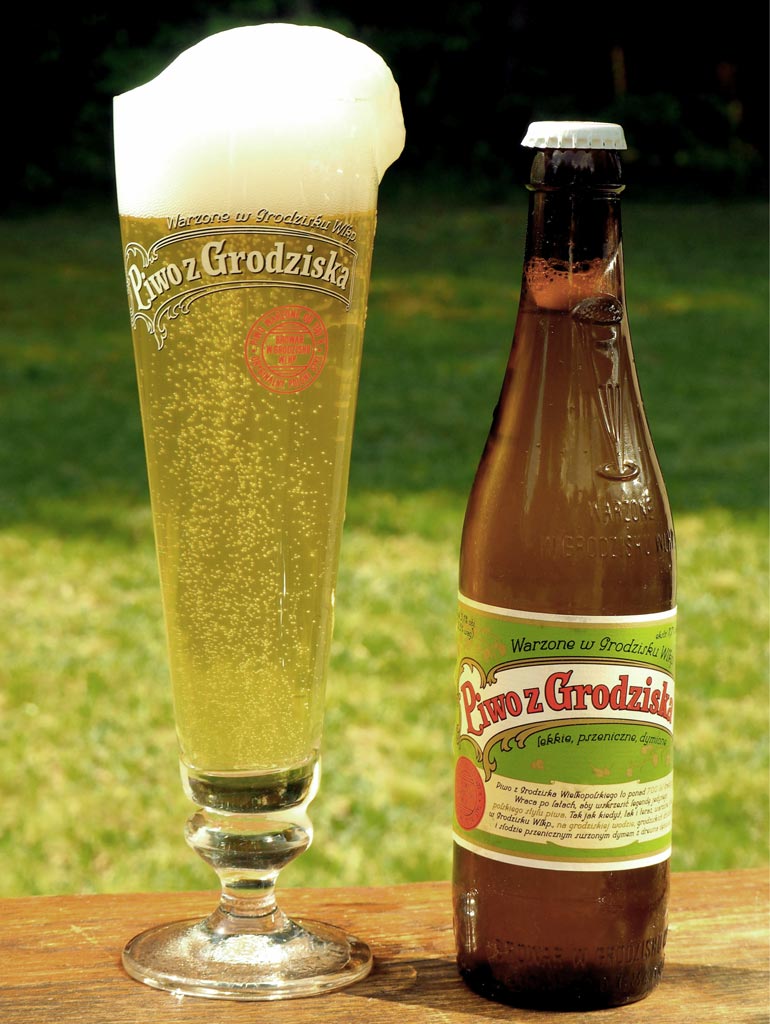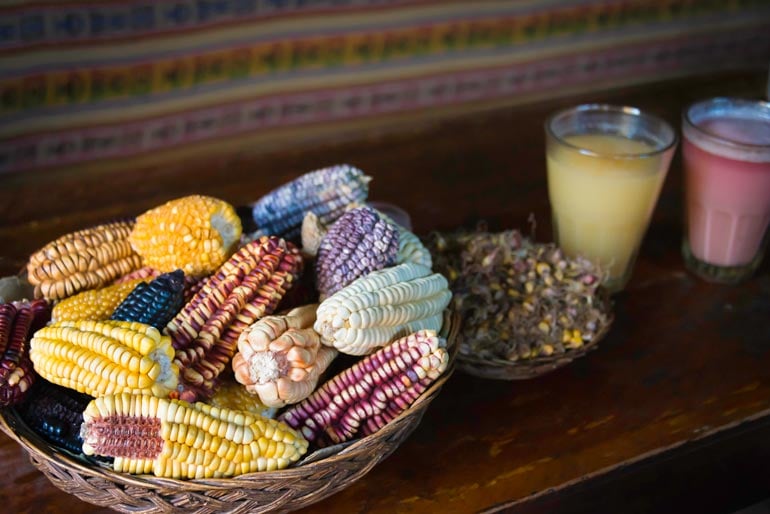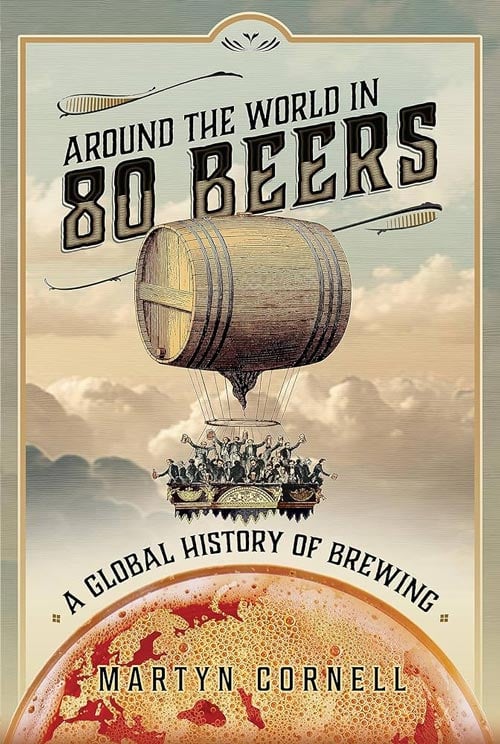Start 14-Day Trial Subscription
*No credit card required

A Trip Around the World in 80 Beers
Martyn Cornell provides highlights from his "beer world tour," as detailed in his new book, Around the World in 80 Beers. The work represents a "trip from one side of the planet to the other, with a beer glass in one hand and a history book in the other."
I’m not sure who first came up with the idea of a trip from one side of the planet to the other, with a beer glass in one hand and a history book in the other, taking contemporary beers from different countries from Norway to New Zealand, and China to South America, and using those beers to investigate brews from the past. But I’m pretty sure I had already been thinking about the idea, with the working title Around the World in 80 Beers, when a publisher from the North of England emailed me with that exact suggestion for a book.
It looked like an excellent pitch for telling some fascinating stories from the world of beer. Some of the stops on this proposed world tour were obvious. Pilsen, in the Czech Republic, would be a must, to talk about the city that gave us the ubiquitous and delightful pilsner. London, home of porter and stout, could not be missed. Neither could the city of Chico in California, where Ken Grossman developed what was to be, in effect, the first American IPA, Sierra Nevada Pale Ale.
Even in tales that might be almost too familiar to need retelling, there are still new angles to be told. When Josef Groll unveiled his sparkling golden brew to the citizens of Pilsen in October 1842, for example, it was not, in fact, as is often claimed, the first blonde lager: there had been others, and pale lagers had been popular in Munich since the 1820s.
Order your copy of Martyn Cornell's Around the World in 80 Beers today!
PURCHASE HERE
This world tour would also be a chance to highlight some beers that, because they do not fall in the Western barley-and-hops tradition, are too little known. Of course, the tours would have to visit Burton upon Trent, where the original English IPAs came from; places where you could still find those traditional English brews mild and bitter, and more recent styles, such as heather ale from Scotland; Belgium, home to almost too many unique styles of beer, from Hoegaarden wheat beer, with its fascinating story of disappearance and rebirth, to a host of unusual beers made by monks to the fascinating wild fermentation brews of the Senne valley; and Germany, again with a range of beers from the ales of Dortmund and Cologne to the wacky smoked beers of Bamberg and the Weisse beers of Berlin via the many brews of Bavaria.
Eastern Europe has a host of little-known styles more than worth visiting: not just Baltic Porter, which developed early in the 19th century when Poland’s Russian rulers cut off its people from supplies of hugely popular London-brewed stouts, so that they had to start brewing their own, which developed into its own style with brews such as the thick, oily Jopejskie, which starts with an original gravity of 1230 and retails at the equivalent of $60 a pint, or Grodziskie, the low-alcohol smoked wheat beer from Poland.
There are more obscure beers than that to be found even in Europe: Norwegian kveik beer, for example, made for hundreds of years by farmer-brewers using a unique yeast, closely related to but not the same as “standard” brewing yeast, which ferments at a much higher temperature than “standard” yeast, and adds its own flavors to the beers made with it, some now available commercially. Similarly the 80 beers on the trip include Chuvashian kvass, the rye-based low-alcohol beer made 400 miles east of Moscow; and sahti, another farmhouse ale, made in Finland, which is a “raw” brew, in that the wort is actually not boiled – unlike almost every other modern beer made today.
Fortunately most of the beers I wanted to include in the round-the-world trip I had already drunk, though I did have to travel to Bamberg in Germany, to sample that city’s unique smoked beers in the place where they were made, and also to Berlin, to try the Weisse beers made by the Schneeeule (“snow owl”) brewery there. But Cooper’s Sparkling Ale I had drunk at the brewery in Australia, for example, I had tried Pilsner Urquell from a wooden cask in a copper mug in a room cut from the sandstone beneath the brewery in Bohemia, and I had interviewed in Brazil several of the brewers who were in the team that developed Brazil’s first “native” beer style, the Catharina Sour.

Martyn's trip took him to Poland, where he sampled Grodziskie, a low-alcohol smoked wheat beer.
Photo Copyright Kpalion/Courtesy of Wikimedia Commons
There was also the opportunity to look at contemporary brews and use those to take a deep gaze into the past. There is still, for example, a brewery in Iraq, making Farida lager. Farida is the inheritor of a tradition that goes back more than 4,000 years, to the time of the Sumerians, whose beer brewing activities we know about from the hundreds of thousands of clay tablets they left behind, covered in cuneiform writing, many of them bureaucratic records to do with the production and distribution of beer. The Sumerians are famous in beery circles for the so-called Hymn to Ninkasi, an ode to their beer goddess, found on clay tablets dating from around 1800 or 1900 BCE, which is frequently claimed to be “an ancient recipe for brewing." It is, however, absolutely nothing of the sort. Not only is the poem ambiguous, incomplete, hugely difficult to translate and hard to understand and interpret, modern interpretations are colored by knowledge of the chemistry of modern brewing. Brewers have claimed to brew a Sumerian beer based on the Hymn, but there is absolutely no way of telling if their reproductions are even halfway accurate.
The trip around the world was also an opportunity to highlight the many brews being made today that are nothing at all to do with the barley-and-hops western tradition. Across Southeast Asia, for example, there are a host of village-brewed beers made with sorghum, rice or millet. Perhaps the most obscure beer in the book is buuhle-tang zu, a rice and yellow millet beer made in the north of Chin State, Myanmar, a mountainous area of around half a million people bordering India and Bangladesh. The beer is made by women in calabash gourds, and can be drunk on informal occasions, or in more formal events, with a "zubawl" or "beer master of ceremonies" in charge to see that beer and meat are handed out according to status.
Other “non-western” beers sampled on the trip include the chibuku sorghum beer of southern Africa, which has grown from homebrew favorite to giant industry in countries such as Zimbabwe and South Africa; and the chicha of Ecuador and Bolivia, which is only just starting to make its way into proper industrial production. And while we were in South America we had to visit the foothills of the Andes, where, in 2004, researchers finally discovered the wild ancestor of all cold-loving lager yeasts, and where, in Argentina, some brewers are making a commercial lager with this newly discovered ancient yeast.

South American Chicha provides gentle tartness from citrusy and lactic acidity, straw-like cereal flavors, very low carbonation and a dry mouthfeel.
Photo Copyright Anthony Tong Lee/Courtesy of Flickr
History never stands still: one beer I was really keen on including was Gale’s Prize Old Ale, a pretty much unique survivor of a strain of aged strong dark bottle-fermented old ale that was common in British breweries in the 19th century but almost died out after the First World War. The Hampshire brewer Gales brewed Prize Old Ale until it closed in 2006 after being brought by the London brewer Fuller Smith & Turner. Fuller’s brewers made a couple of brews of POA, but could not persuade their bosses to put their hearts into the beer. Fortunately for the lovers of this hugely rare beer, a brewer in another corner of the Fuller’s empire, Henry Kirk of the Dark Star brewery in Sussex, managed to get a batch of POA brewed that was blended with some of the surviving beer from the past, to inoculate it with yeasts that had been around for perhaps a century or more.
Barely had the latest POA hit the shelves than it was announced that the Dark Star brewery, too, would be closing. However, production of POA was handed over to the Meantime brewery in Greenwich in southeast London, which was the situation as I was handing over the manuscript for ATWI80B. Just a few months after Meantime’s version of this storied brew appeared, however, and the news hit that the Greenwich brewery, too was going to be shut. Finally, at long last, Fuller’s/Dark Star have come to the rescue and will continue to brew POA – with a batch releasing in the autumn of 2024.
A similar story occurred with another unique historic brew, Steam Beer from the Anchor brewery in San Francisco, last survivor of a style that had once been brewed up and down the Pacific coast, and even in Canada. The story of steam beer’s rescue from extinction by Fritz Maytag in the 1960s, and its role as one of the first American craft beers, was too well known to miss it out of the list of 80 brews on the round-the-world trip. But again, just after I handed over my manuscript to the publisher, it was announced by the brewery’s owner since 2019, the Japanese company Sapporo, that the Anchor brewery was closing, and the brewing of its legendary steam beer was ceasing. Fortunately, I and the publishers held our nerve and kept the chapter on steam beer in the book just as the news that Anchor Brewing was being resurrected broke, continuing steam beer’s legacy as one of the most important beer styles of our time.
The trip was also a chance to knock a number of long-standing myths on the head. One was the story of Irish Red Ale. This is presented today as a genuine old beer style, and large numbers of brewers in Ireland and the United States brew red ales that they claim an ancient lineage for. In fact, Irish Red Ale was invented by a French brewery, Pelforth, in 1974, which was looking to expand its line-up of beers, and bought the recipe to something called Lett’s Strong Ale from a company in Wexford, Ireland that had operated as a brewery until 1956, before becoming just a drinks distributor. Then in 1981 Pelforth sold the rights to what it was calling Bière Rousse to the American brewing giant Coors, which renamed it George Killian’s Irish Red Ale. The promotion by Coors of George Killian’s Irish Red Ale persuaded American craft brewers that this was an authentic Irish beer style, and by 1986 craft brewers in the U.S. were making their own allegedly authentic “Irish Red Ales.” Today Irish Red Ale is recognized as a proper separate type of beer with a supposedly ancient lineage, and brewed and sold in Ireland as such, though it is no more than 50 years old.




